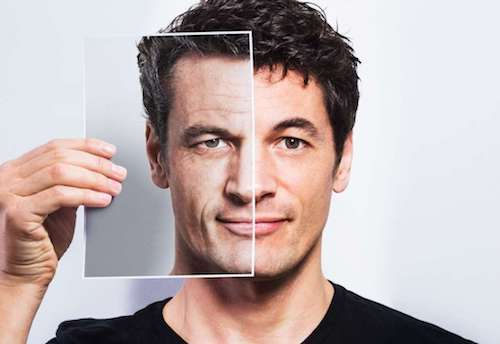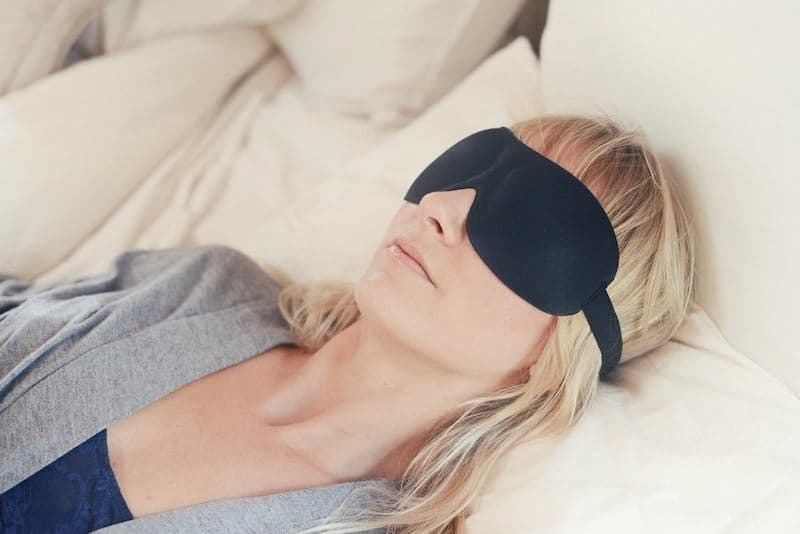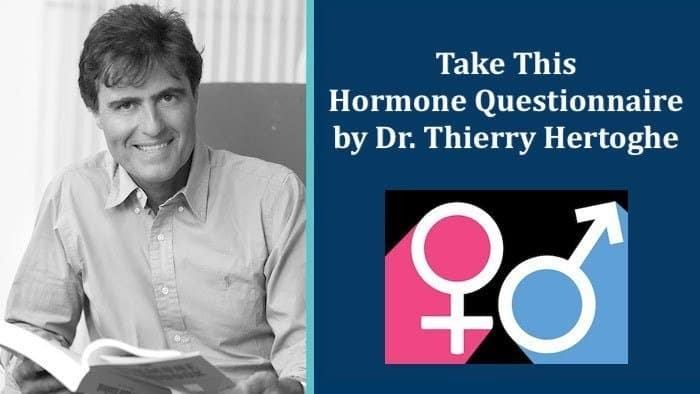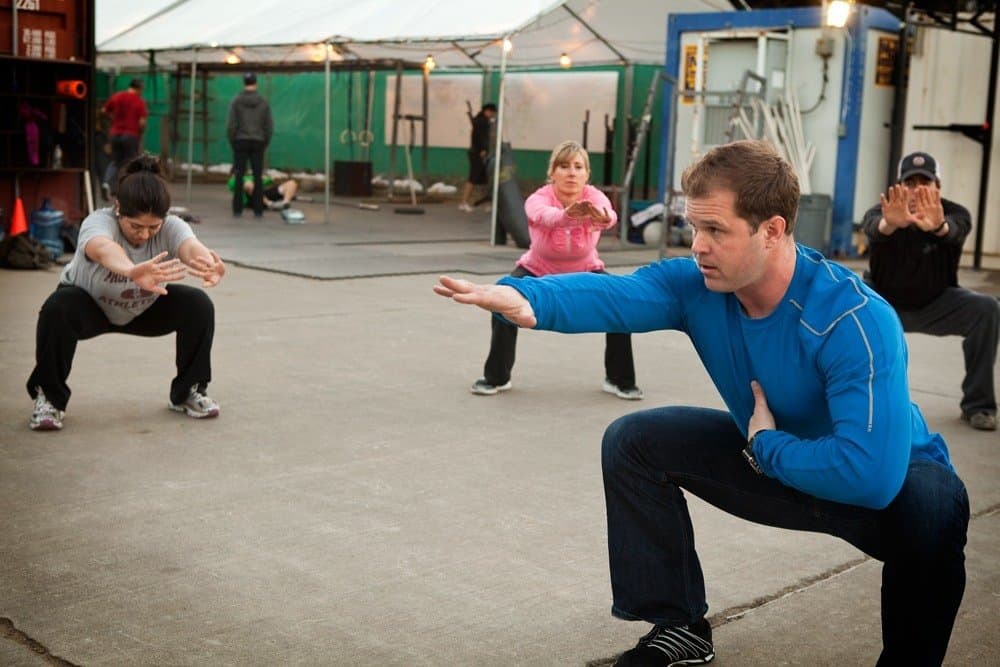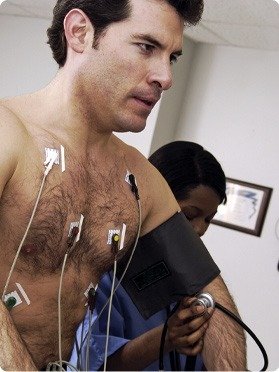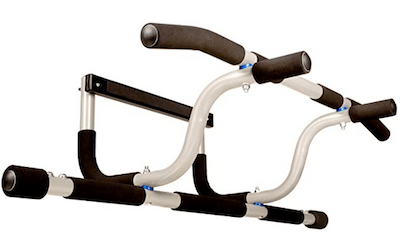The Anti-aging Lifestyle Factors You Must Address, Part 2

There are 12 specific anti-aging lifestyle factors you need to address if you’re going to increase your healthspan and live a long and strong life. I address the first six in Part 1, and now will address the last six.
In Part 1, I address the first six of twelve anti-aging lifestyle factors that are of vital importance if you want to live youthfully into old age. Now, here in Part 2, I’ll speak to the second and last group of six anti-aging lifestyle factors.
My comments on these “factors” are guided by the results of a survey taken by Subscribers to GarmaOnHealth.com that asked what hurdles they face in adopting each of the anti-aging lifestyle factors, or what they want me to address relative to them in the anti-aging course I’m working on.
The intent of the survey was to help guide the material I include in a video course I’m creating based on longevity science. The course is a comprehensive blueprint covering what you can do now to slow down the aging process, or even reverse it.
What follows are exact or representative responses to the survey questions.
Covered here in Part 2:
10. Mobility
Surely you will find the same issues, limitations and concerns that you grapple with expressed below — and perhaps my guidance will be helpful.
If you have questions, or comments, please write them in the Comments below, which you can do anonymously if you wish.
Now to the comments and my responses.
Restorative Sleep, A Critical Anti-aging Lifestyle Factor
Deep, restorative sleep is essential for a long and healthy life. If you don’t get enough restorative sleep, what are the reasons?
I have anxiety.
Anxiety can be a tax on sleep if you don’t find a way to root it out. Four things can be very helpful:
- Do the 4x4x4 breath when anxious (it works for the military).
- Identify the thoughts that spark the anxiety. What do you keep ruminating about that provokes anxiety. Once identified, practice a response to such thoughts. Using an affirmative mantra can help, such as “I’m making this a bigger deal than it is”, and then continuing with why that assertion is true.
- Meditate: See my post: Meditate Like A Monk In 20 Minutes.
- Take Adaptogens.
My internal clock wakes me daily before 5 am. I would love to sleep more though for brain health.
Yes, consistent, restorative sleep is essential for brain health. One consistent rule that sleep experts proselytize is to go to bed and wake up at the same time every night. An “internal clock” that wakes you up early in the morning, like 5:00 AM, needs to be matched with a commitment to get to bed early enough to get the recommended seven to nine hours of sleep each night.
If you’re a night owl, try going to bed 15 minutes earlier than usual for a few nights, gradually adding 15 minutes until you “hit the hay” seven to nine hours before you usually awaken.
I do have trouble sleeping. I never had that problem when I was younger but I sure do now that I’m old. I will sleep two or three hours and I will wake up and be wide awake. Sometimes I will go back to sleep, sometimes I won’t.
There are several reasons that our sleep becomes more disruptive as we age. This Healthline article describes what might interfere with sleep, and offers the following suggestions.
You can develop good sleeping habits by:
- going to bed and waking up at the same time each day
- using the bed only for sleep and sex, not other activities like work
- doing quiet activities, like reading, before bed
- avoiding bright lights before bed
- keeping a soothing and comfortable bedroom environment
- avoiding naps
If you have trouble falling asleep within 20 minutes, you may want to try getting up and doing something before going back to bed. Forcing sleep may make falling asleep harder.
A study about managing sleep disorders in older adults also suggests:
- limiting liquid before bed
- avoiding caffeine and alcohol
- eating three to four hours before bedtime
- exercising regularly, but not right before bedtime
- taking a warm bath to relax
Not walking everyday or staying up too late on weekends.
Surely, exercise does prime you for sleep, simply because your body gets weary and craves sleep. And although it’s not going to kill you to have a few late night here and there, try to embrace consistent sleeping habits every night.
If you have a late night, allow yourself a late morning in order to get your seven to eight hours in, and get back to the normal sleep routine ASAP.
I have too many duties.
If the “duties” literally necessitate that you get less than seven hours of sleep, consider how you might reduce the load. It will do no one any good if you burn yourself out due to lack of sleep.
If it’s the anxiety associated with those duties that keep you tossing and turning, check out my response to “I have anxiety” above.
Lack of evening routine. More daylight during the summer.
Unless you live in a high latitude country, such as Sweden, it’s likely to be dark at a “normal” range of  bedtime hours, say 9:00 to 11:00. If it’s light outside when you want to go to bed, a sleep mask is a great tool.
bedtime hours, say 9:00 to 11:00. If it’s light outside when you want to go to bed, a sleep mask is a great tool.
Detoxification
I’ve done a deep dive on detoxification. Go here and pick the post that resonates.
Are you willing to detoxify what ages you? We live in a toxic world, and it overwhelms our natural detoxification capabilities. What would you need to do a detox program?
Yes! I have probably had more Hg [mercury] exposure than I should.
I thought the same thing, given how filled my teeth were with amalgam fillings, which can contain as much as 50% mercury, according to GreenDentistry.com. So I took a comprehensive test called the Mercury Tri-test by Quicksilver Scientific, and was surprised to find that my body did not have a burdensome heavy metals toxic load.
I had the amalgams removed anyway. In Mexico. Here’s the story.
Life Extension Foundation offers several toxin tests:
Like all of the 12 anti-aging lifestyle factors covered here and in Part 1, I will cover detoxification extensively in my anti-aging course, because getting rid of toxin accumulation in your body is essential if you’re to avoid the degenerative diseases common in old age. This is not easy to do, even though our body’s detoxification system is amazing.
The reason it’s not easy to get rid of toxic build up is because our world has become a toxic waste dump, and that means our environment overwhelms our body’s natural ability to detoxify.
Read:
- Why You Must Detox All The Time
- How 212 Toxins Inside Your Body Make You Sick and Fat
- How to Detoxify and Why You Absolutely Must
I want a detox program.
Well, in my anti-aging course, you’re going to get one.
In the meantime, read the links above.
I know I’m surrounded by toxins; they’re everywhere I go and in everything I eat, drink and breathe. I would have to be on a constant detox program and it would only eliminate some of the toxins, not all.
It’s probably true that unless you live in a pristine environment and devote yourself to detoxification, you’ll always have some toxins in your body. That’s OK, if the “burden” the toxins don’t put on your health is minimal. Toxins in the body become a problem when they bioaccumulate and thereby contribute to disease.
The good news is that, if healthy, your body is “on a constant detox program” by its own design, but it’s also true that it alone will “only eliminate some of the toxins, not all”, because our innate detoxification system was not designed to deal with the amount of toxic load most of us experience.
Indeed, your body often needs help.
I repeat; read:
- Why You Must Detox All The Time
- How 212 Toxins Inside Your Body Make You Sick and Fat
- How to Detoxify and Why You Absolutely Must
I assume that with very good eating, doing 16:8 5 days a week, and IF once a month, my detoxing is adequate – TRUE???
So, the 16:8 this question refers to is the Intermittent Fasting schedule of fasting for 16 hours and eating for 8 during a 24 hour cycle. I practice this schedule: I eat from 11:00 AM to 7:00 PM, and then fast till the next day.
Whether this is adequate enough to promote sufficient detoxification to minimize your toxic load depends on how much toxin is getting absorbed into your body and how much is excreted. Without a test, this is hard to know.
Again, here are some tests to consider:
- Mercury Tri-test by Quicksilver Scientific
- Toxic Metals Panel
- Heavy Metals Panel
- Environmental Pollutants Profile Test
Returning to Intermittent Fasting, know that it plays a significant role in my forthcoming anti-aging course. Go here for more about IF.
I need the time and willpower to complete it.
We all have the same amount of time, 24 hours. Unless in prison, what is done with that time is ultimately up to us. It comes down to how you prioritize what gets done.
Willpower is the wrong thing to rely on, because willpower can be beaten down to dust. Instead, you need to develop a process based on habits.
Habit making is a key part of adopting an anti-aging lifestyle, and accordingly I’ve written extensively about how to make habits that stick.
Go here and pick the post that most resonates.
Among my favorites:
- James Clear: “How To Build Better Habits”
- How To Use The IF/THEN Plan To Achieve Your Goals
- Why Change Is Hard — The 3 Reasons We Get Stuck
Hormone optimization
Go here for my post on hormone optimization.
Our hormones degrade with age and this contributes to the aging process. Are you experiencing problems with certain hormones, such as testosterone, estrogen or thyroid stimulating hormone (TSH)?
I don’t know/Maybe/Yes, duh.
Well, there are some indicators that you can assess yourself. Let third-generation endocrinologist Dr. Thierry Hertoghe guide you with his Hormone Questionnaire.
Here’s what he covers:
- Melatonin
- Growth Hormone
- Thyroid
- Cortisol
- DHEA
- Pregnenolone
- Aldosterone
- Estrogen
- Testosterone (both men and women)
- Progesterone (both men and women)
I have not been tested but I lack energy, strength and stamina.
Take the Hormone Questionnaire.
If you want to get tested:
Not that I am aware of, but I am very conscious of declining levels of a few eg melatonin, NAD+, glucosamine, GH, IGF1, testo; BUT the big question is what are the benefits of taking identical supplements – don’t necessarily believe the hype, and they are costly.
OK, not everything you mention is a hormone, but I get the drift — it’s true that a lot of important molecules, compounds, as well as hormones, decline as we age.
Only a medical doctor who is trained in hormone therapy and tests you can safely advise taking identical hormone therapies. Absent that, what you can do to safely boost some hormones is to exercise consistently, and at times, with vigor.
Hahns Petty, an exercise physiologist at Piedmont Atlanta Fitness Center, recommends exercise to enhance your quality of life and help regulate hormonal imbalances.
For instance:
Dopamine. Exercise increases dopamine levels in the brain, which decreases stress and depression.
Serotonin. Physical activity releases serotonin, which promotes a good night’s rest. Boosting serotonin levels can also positively impact mood, social behavior, appetite, digestion, memory and sexual function.
Testosterone. As a man ages, testosterone naturally decreases. And if not addressed, so does his muscle mass, strength, sex drive, and sperm count. Regular physical activity that can help boost testosterone, which can slow the natural effects of aging, include resistance training and high intensity interval training.
Estrogen. The symptoms of menopause are in part driven by the imbalance and decline of estrogen. One way to combat this is to exercise. Getting your heart rate up for at least a half hour every day helps boost estrogen levels, which can help take the edge off of menopause symptoms.
Mobility, An Overlooked Anti-aging Lifestyle Factor
Go here for my posts about how to improve mobility.
Is your mobility compromised? What could get you to spend 10 minutes a day working on your joint mobility and structural alignment?
I need a program to address this.
Good to know. Stay tuned — It will be in my anti-aging course.
In the meantime, start here.
Flexibility is really good all over, but recently I think I tore my rotator cuff in my right shoulder trying to get to 40 straight pushups.
I can really relate to shoulder problems. About 10 years ago, I suffered (and I do mean suffered) from
adhesive encapsulites (frozen shoulder) in my right shoulder complex, and then nearly two years ago, the left one followed suit, although not nearly as severe.
If you can manage it, the number one thing to do is to hang from a pull-up bar. Worked for me. That said, if you’re in a lot of discomfort, see a doctor.
Speaking of a doctor, here’s one that explains how hanging can help with shoulder pain:
Deciding on a time of day to do it and sticking with it. I would, besides exercising, like to get into a stretching routine.
Sounds like you could use a nudge toward learning how to form habits:
- James Clear: “How To Build Better Habits”
- How To Use The IF/THEN Plan To Achieve Your Goals
- Why Change Is Hard — The 3 Reasons We Get Stuck
I work on this pretty much daily. Sometimes this is hindered by early morning commitments
No one sticks perfectly to their schedule of good habits. When life intrudes, try the What/If Tactic.
Read: How To Use The IF/THEN Plan To Achieve Your Goals.
Cardiovascular Fitness
Go here to read my posts on cardio fitness.
Can you jog on level ground, or walk up a hill for 1/2 hour? If not, what would be the best way to motivate you to work up to this capacity?
I currently do HIIT training on a Schwinn Airdyne bike, ten minutes and for each minute 20 seconds is an all-out sprint.
A Schwinn Airdyne bike (or one similar) is my favorite piece of equipment for HIIT (High Intensity  Interval Training) for three reasons:
Interval Training) for three reasons:
- It’s easy and quick to engage and disengage from the machine (unlike a rowing machine, given the toe straps), so you can integrate it into your workout routine (hop on and off, on and off) without taking too much time.
- It works the major muscles of both the lower (quads, hip flexors, glutes) and upper body (shoulders, lats).
- There is no impact on the joints that other HIIT exercises do, such as sprinting and jumping.
As you get older, the key things to remember with HIIT is:
- It takes longer to recover from intense exercise, so don’t do more than two sessions per week spread out by several days.
- Start with modest intensity and slowly increase it so you don’t injure yourself.
My cardio exercise depends on the day. More yes days than not.
Think about adding in some mobility and strength training into your weekly exercise schedule. Ideally, on any given day, we should be working on mobility or strength training or cardio (either aerobic or anaerobic).
This can get confusing unless you schedule it. Mobility can be paired with both strength training and cardio, but if you pair strength training and cardio on the same day, don’t go all out with both.
Lean Muscle and Strength
Go here to read my posts on gaining lean muscle and strength.
Are you strong and lean? If you can’t do 10 push-ups, two chin-ups and 40 squats, how many days a week, and how much time during those days would you be willing to exercise?
I’ve never been able to do chin-ups, no matter how long I train.
I can relate. A long time ago, I could do 16 reps. Now, much fewer.
Chin-ups or pull-ups can be difficult, especially if, like me, you have long arms and are heavy. The heavier you are, the lower your strength-to-weight ratio, which is why gymnasts aren’t built like Shaquille O’Neal.
One of the best way to train for chin-ups is to do many low rep sets throughout the day, most days of the
week. I have a doorway chin-up bar. Every time I walk through the door, I do three chin-ups. Over the course of the day, I’ll typically do 30 in total, without fatigue, because no one set of three taxes the muscles when spaced over the course of a day.
Over time, you get stronger. Once you can do five easily, program chin-ups and/or pull-ups into your resistance training regime.
I used to be able to do that many push-ups with ease. I can barely do two chin-ups. 40 squares holding a 25-35 pound dumbbell is a breeze. On weekends I already exercise for an hour each day. On weekdays at the office I’ll exercise for 5-15 minutes depending, at least 2-3 days.
Being able to do many chin-ups is not essential for living a “long and strong life”, as I like to put it. Sure, it’s nice to be strong enough to haul your chin over the bar, but lifting your body weight at 70+ years of age isn’t essential. What is important is being able to lift a couple bags of groceries off the floor and walk them up a few flights of stairs — that’s a better indication of fitness for longevity purposes.
It sounds like you’re doing enough resistance training. Be consistent and try to progressively get stronger.
No. I feel weak and I have a pot belly. I know what I would like to do. I would like to work out every day on alternating body parts for at least an hour or more, maybe taking one day off a week.
Well, there are thousands of programs available on the Internet to guide you. Having said that, I guess the problem with that is selecting the best ones for you.
I’ll have a few programs to choose from in my anti-aging course. In the meantime, as I wrote in Part 1, check out the YouTube channels Minus the Gym and Fitness FAQs.
For exercises, 20-30 minutes max. Would need to include balance and vision exercises.
You can get a lot done in 20 or 30 minutes if the exercise routine has enough intensity and is done consistently.
Balance exercises are often part of a mobility regime. In my mobility practice, I include balancing on each foot, both with eyes open and closed (much harder).
For vision, read my posts:
So ends my response to the questions and comments made by anti-aging course survey respondents. All of these topics will be part of my comprehensive anti-aging lifestyle factors course. If you’d like to keep up with its development and get the Sunday Newsletter, subscribe here.
Last Updated on May 1, 2021 by Joe Garma

